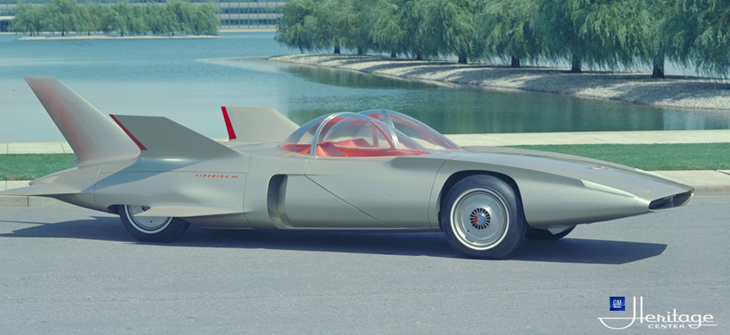
1958 GM Motorama. Firebird III
The Firebird III was by far the most intriguing and influential of the Motorama Firebirds. Built in 1958, it was the only member of the Firebird trio to have any direct impact on the design of General Motors production vehicles. The 1959 Cadillac featured some of the Firebird III’s surface development and its severe rocker panel tuckunder. The 1961 Caddy picked up the Firebird’s rear skegs – those stubby little fins that hung down off the bottoms of the rear fenders. The Firebird III broke a number of legendary GM designer Harley Earl’s styling rules and that’s one of the reasons it became such an important design. It had very little chrome and no parallel lines. The vehicle also put the ultimate twist on tailfins. GM entertained plans for a Firebird IV that went as far as a full-sized wooden frame, but the program’s greatest legacy was to give its name to the Pontiac ponycars starting in 1967
The Firebird III was by far the most intriguing and influential of the Motorama Firebirds. Built in 1958, it was the only member of the Firebird trio to have any direct impact on the design of General Motors production vehicles. The 1959 Cadillac featured some of the Firebird III’s surface development and its severe rocker panel tuck-under. The 1961 Caddy picked up the Firebird’s rear skegs – those stubby little fins that hung down off the bottoms of the rear fenders.
The Firebird III broke a number of legendary GM designer Harley Earl’s styling rules and that’s one of the reasons it became such an important design. It had very little chrome and no parallel lines. The vehicle also put the ultimate twist on tailfins. GM entertained plans for a Firebird IV that went as far as a full-sized wooden frame, but the program’s greatest legacy was to give its name to the Pontiac pony cars starting in 1967.
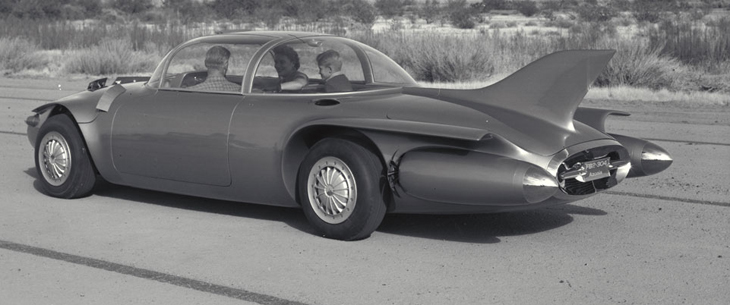
1956 GM Motorama. Firebird II
The General Motors Firebird II, a gas-turbine powered engineering concept car, was introduced at the 1956 GM Motorama. Firebird II was the successor to the famous 1953 Firebird I.
The four-passenger Firebird II was characterized by innovations like a titanium body, a regenerative gas turbine, all-wheel independent suspension with automatic load-leveling, power disc brakes, alternator, magnetic ignition key, electric gear selection, and individually-controlled air conditioning.
The General Motors Firebird II, a gas-turbine powered engineering concept car, was introduced at the 1956 GM Motorama. Firebird II was the successor to the famous 1954 Firebird I.
The four-passenger Firebird II was characterized by innovations like a titanium body, a regenerative gas turbine, all-wheel independent suspension with automatic load-leveling, power disc brakes, alternator, magnetic ignition key, electric gear selection, and individually-controlled air conditioning.
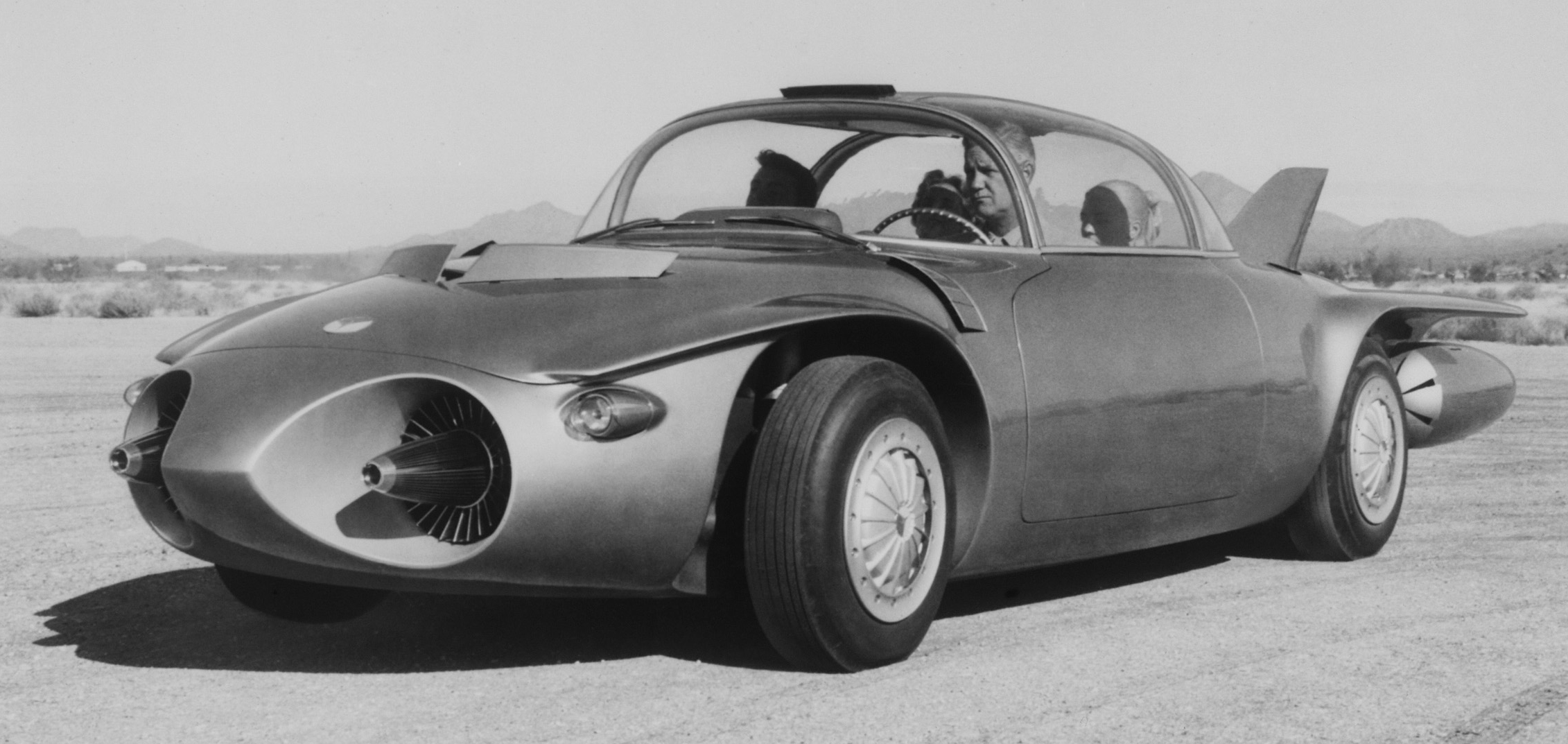
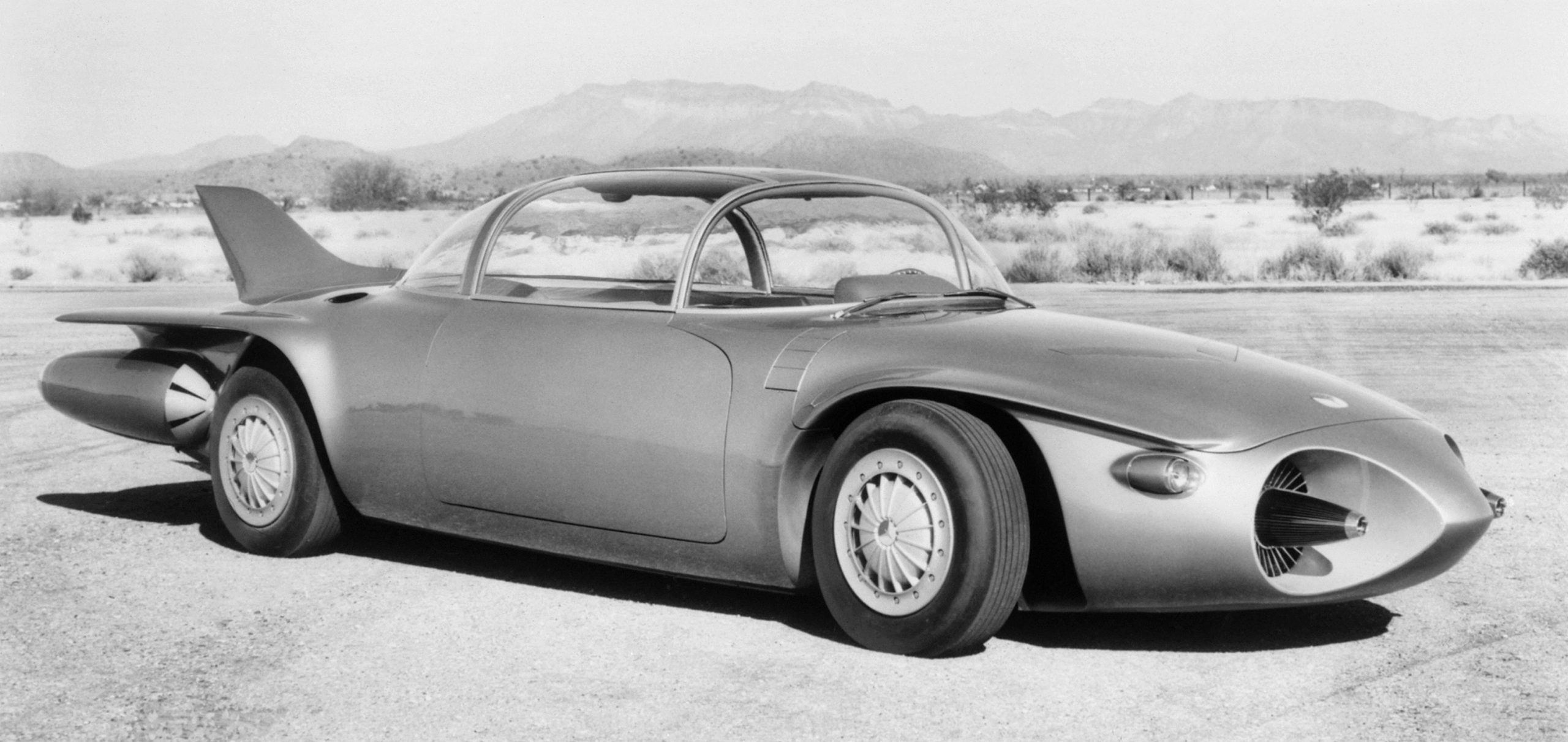
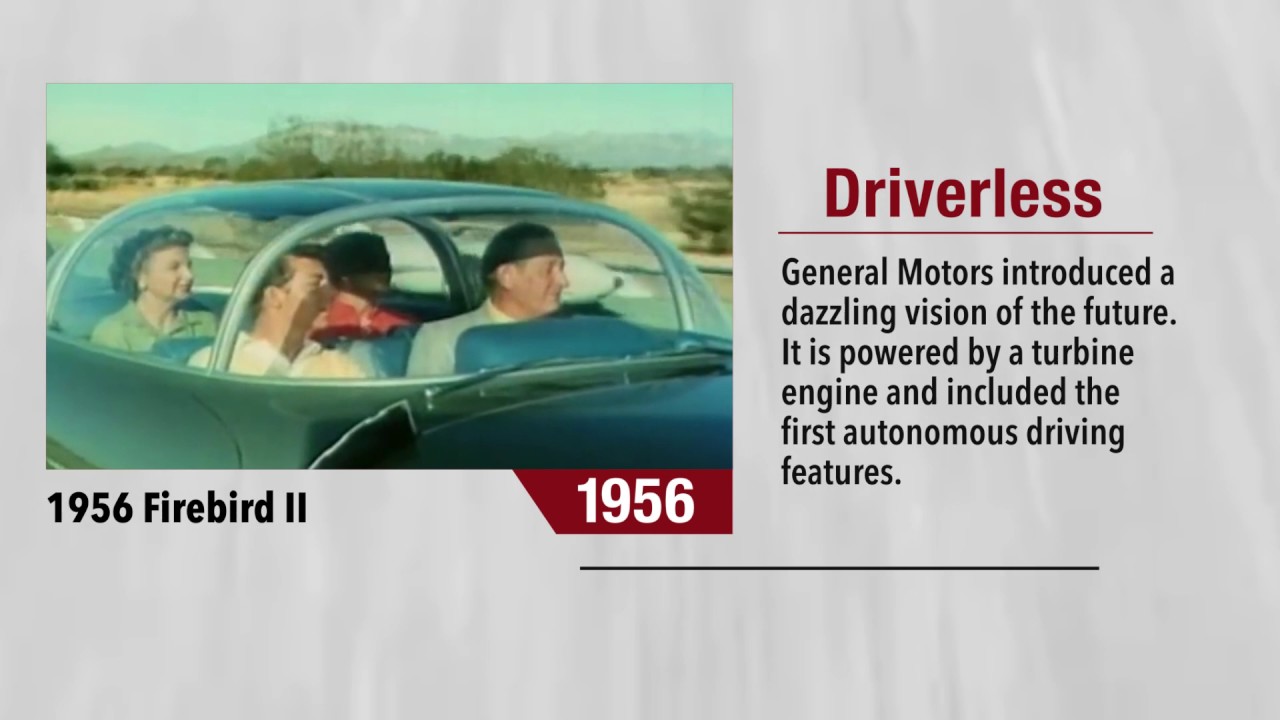
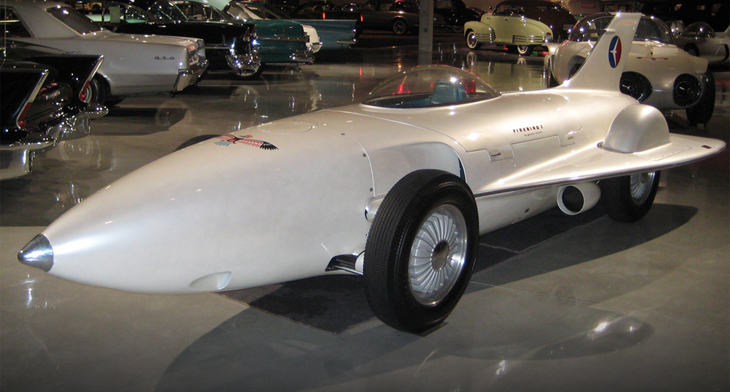
The 1953 GM XP-21 Firebird 1
The 1953 XP-21 Firebird 1 was the first gas turbine automobile ever to be built and tested in the United States. Designed strictly as an engineering and styling exercise, Firebird 1 was intended to determine whether the gas turbine could be used as an efficient and economical powerplant for future vehicles.
The idea for Firebird 1 originated with Harley J. Earl, the legendary GM Styling Vice President, who also designed the car’s aircraft-inspired fiberglass-reinforced plastic body. The engine, termed “Whirlfire Turbo-Power,” was developed under the direction of Charles L. McCuen, then general manager of GM Research Laboratories Division.
Unlike a jet airplane, which develops thrust through the action of exhaust gas through a tailcone, the Whirlfire Turbo-Power engine propelled the Firebird 1 through a power turbine acting on the rear wheels via a transmission. The engine was capable of 370 hp at a power turbine speed of 13,000 rpm
1954 Firebird I
The 1954 XP-21 Firebird 1 was the first gas turbine automobile ever to be built and tested in the United States. Designed strictly as an engineering and styling exercise, Firebird I was intended to determine whether the gas turbine could be used as an efficient and economical powerplant for future vehicles.
The idea for Firebird I originated with Harley J. Earl, the legendary GM Styling Vice President, who also designed the car’s aircraft-inspired fiberglass-reinforced plastic body. The engine, termed “Whirlfire Turbo-Power,” was developed under the direction of Charles L. McCuen, then general manager of GM Research Laboratories Division.
Unlike a jet airplane, which develops thrust through the action of exhaust gas through a tailcone, the Whirlfire Turbo-Power engine propelled the Firebird I through a power turbine acting on the rear wheels via a transmission. The engine was capable of 370 horsepower at a power turbine speed of 13,000 rpm.
Every surface of the vehicle was refined in the California Institute of Technology wind tunnel, one of the first examples of the application of aerodynamic theories to automobile vehicle design. The negative angle of attack of the wings and the 6-square-foot area of the tail fin were all optimized through this ground-breaking work.
Wheelbase: 100.0 in (254.00 cm)
Weight: 2800.00 lbs (1,270.06 kg)
Engine: Single Stage, Axial Flow Turbine, 370 horsepoweer @ 26,000 rpm

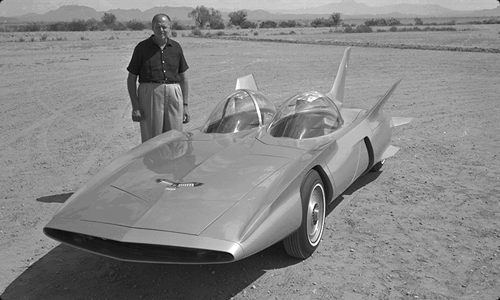
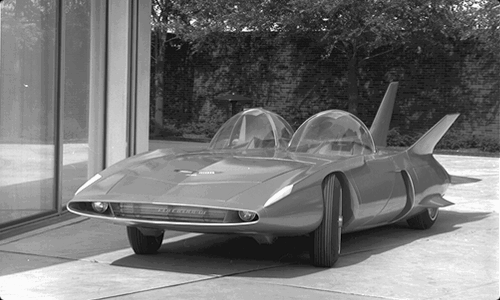



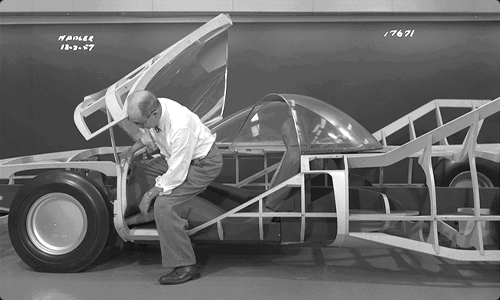
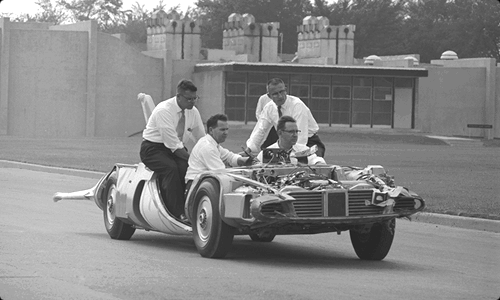
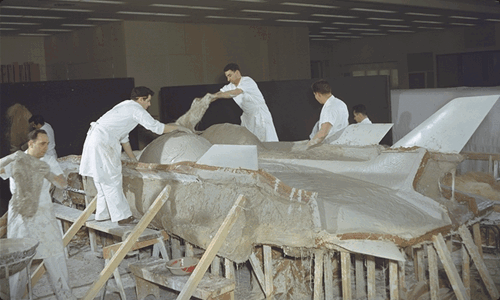
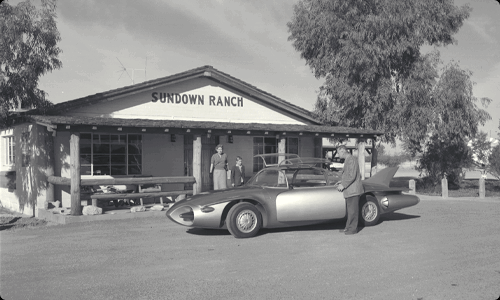
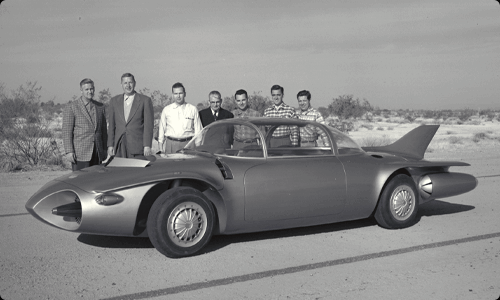
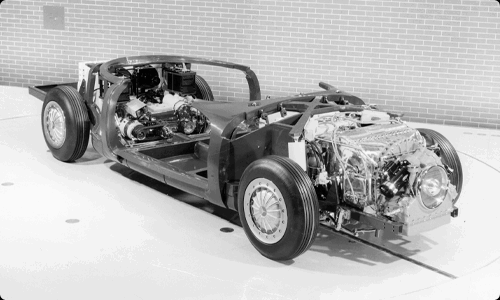
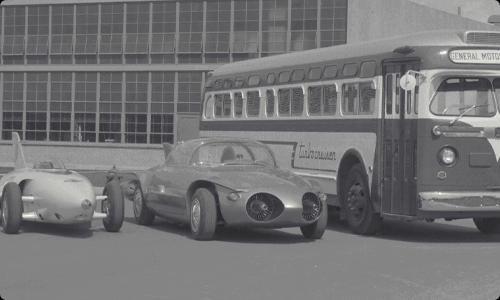
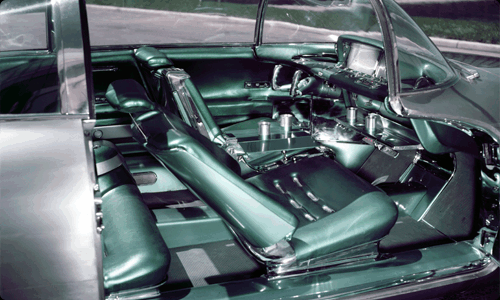



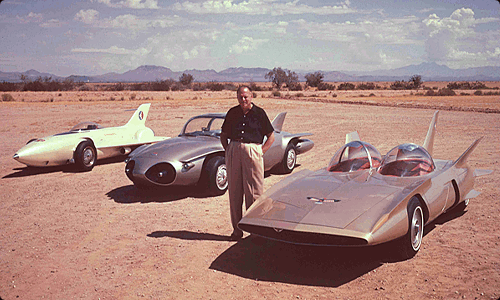

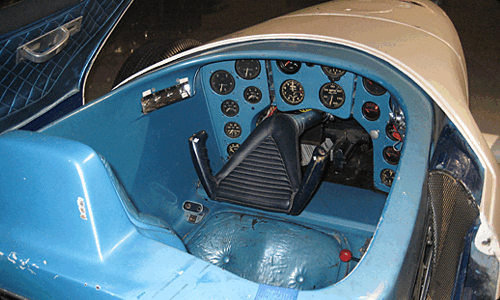
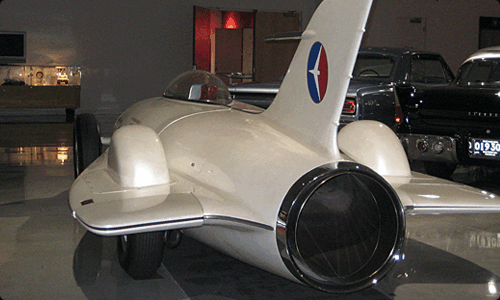
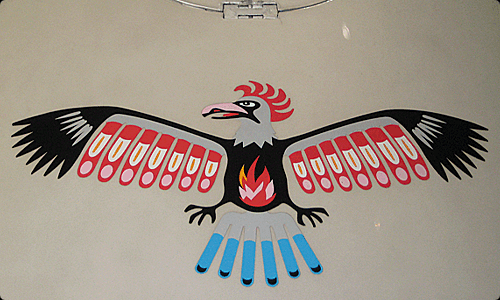
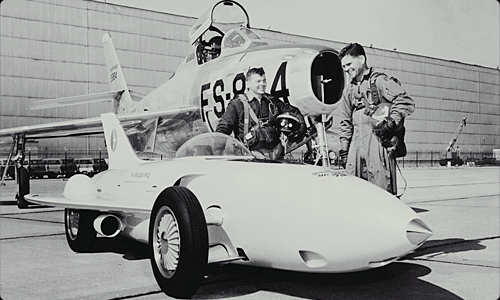
You must be logged in to post a comment.